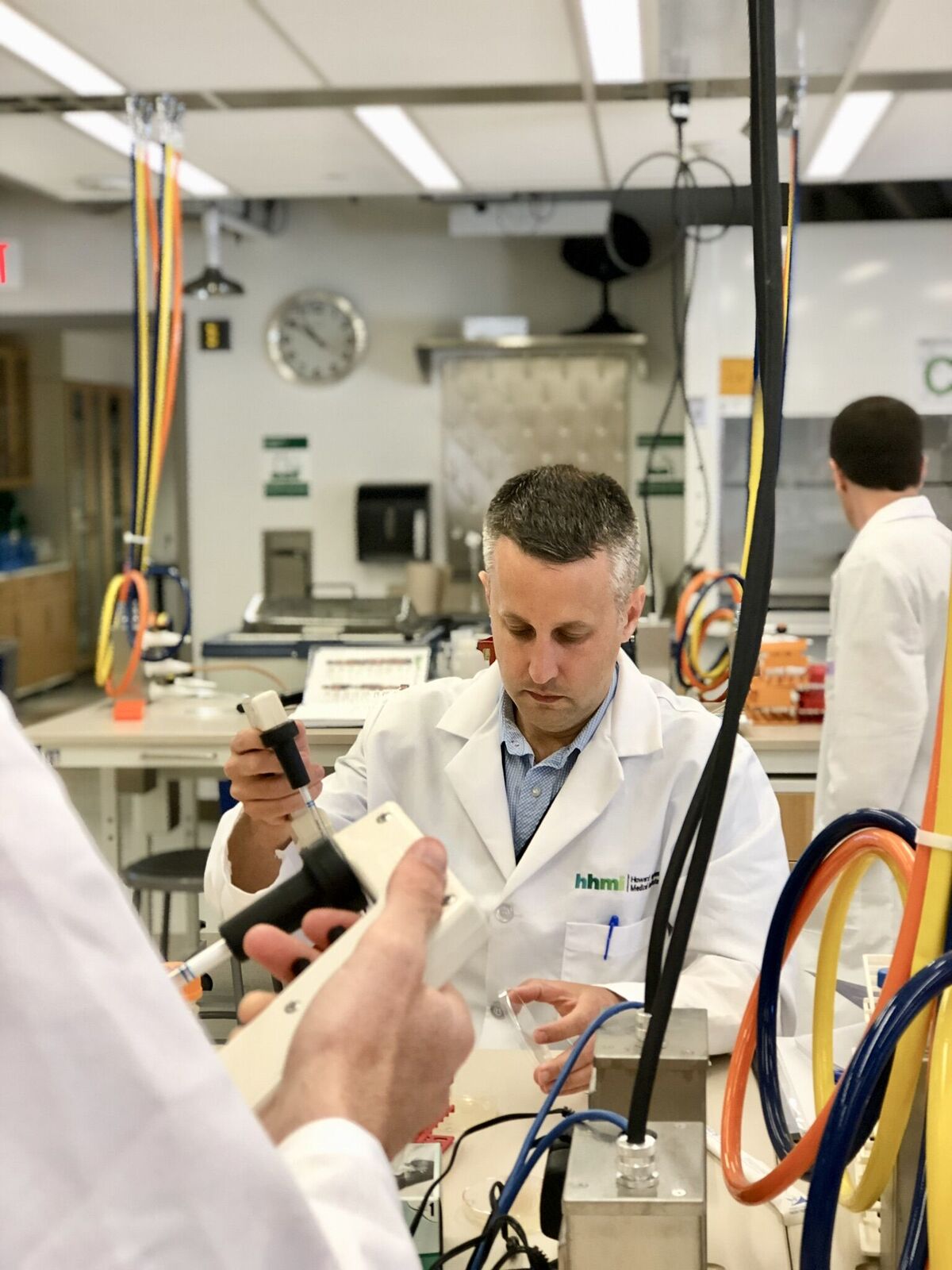Welcome to the forums at seaphages.org. Please feel free to ask any questions related to the SEA-PHAGES program. Any logged-in user may post new topics and reply to existing topics. If you'd like to see a new forum created, please contact us using our form or email us at info@seaphages.org.
Recent Activity
Issues with getting PYCa top agar to solidify
| Link to this post | posted 13 Sep, 2018 18:52 | |
|---|---|
|
|
Hi all! This is the first year we're working with M. foliorum, so we've switched to PYCa from 7H9. We've had issues with TA solidifying in the past, and the solution was to increase our agar concentration. But I'm wondering if there is any further insight/ideas as to what's happening in this particular case. We make individual bottles (~100-200mL) 1x TA and keep them in a water bath at 60deg, so that each pair of students has their own bottle. All bottles are aliquoted from the same stock, right out of the autoclave. Students are instructed to take their bottles out and wait until they can safely handle them (not to hot to pick up), before plating. This is usually on the order of 5-10min. Some of my students are having success plating, and others can't get their TA to solidify; even when left out for 2+ hours! In one case, I had a student plate 12 plates total; her first one never solidified, but the other 11 did within about 10-15min). Also, it seems to really only a be a problem with our morning class (but not our afternoon class). It's very strange. I wonder how important temperature is in this process? Is it possible that if it's too hot, it simply will never solidify? Or is it possible that the plates can be too hot/cold/moist/dry? Any insight is appreciated! Thanks hive mind! |
| Link to this post | posted 13 Sep, 2018 19:04 | |
|---|---|
|
|
Nikki, Hi. I have no really data to share, but here is my experience. 1. How wet are the plates? sometimes if there is a lot of cold condensation on the surface of the plate, when you add top agar it stays a soup (or a slippery mess). You can avoid this by keeping your plates at room temperature (we do). There are no antibiotics in our PYCa plates, so no harm… 2. The hotter the top agar, the better. (I have no explanation for that, but I have less agar problems when my top agar is on the hot side of things.) 3. Yes, I think the room temperature, but more likely the humidity, plays a factor. I saw this most often when I was in classrooms and in a hurry to get the plates off the benches. I have not data to share to support that. Do you have students vent (i.e. crack them a bit) their plates when drying? I always vent my plates for a short time. It is unlikely that you have bunsen burners in the area, but having a bunsen burner burning in the background sometimes helps (may be totally unsafe in a student lab environment, so it is more important to stay safe). again, this works because the air is dryer.) All I've got for now. Good luck! debbie |
| Link to this post | posted 14 Sep, 2018 06:23 | |
|---|---|
|
|
As Debbie stated, the temperature of the plate matters. We are using PYCa media and pull out plates to warm to room temperature before lab starts, but sometimes students need additional plates. We ask them to let the cold plates warm a bit before using. However, if they are in a rush or impatient and place top agar on the too cold plate (usually with some condensation forming on it), their top agar slides around because a layer of water forms between the cold plate and the hot top agar. When they re-do it with room temperature plates, everything works as expected. |
| Link to this post | posted 14 Sep, 2018 12:53 | |
|---|---|
|
|
Thank-you both! These are the kinds of things I'd suspected (and could explain why the morning class is having issues, but the afternoon class is not; plates are generally already pulled out and sitting at room temp for the afternoon class, but not the morning). Interesting side note: We took a couple bottles of TA out of the water bath and let them sit out at room temp. Many hours later, they are still liquid. So I think a new batch of TA is in order anyway! But we'll be sure to use room temp plates, and we'll keep the water bath at 60deg (relatively hot!). Thanks again! Nikki |
| Link to this post | posted 14 Sep, 2018 13:20 | |
|---|---|
|
|
Hi Nikki, In addition to the excellent suggestions by Debbie and Dustin, the observation that the TA was not solidifying in the bottle made me wonder if the agar was thoroughly mixed when the TA came out of the autoclave? We have seen that the agar can settle to the bottom, especially if it is a large flask and if the agar was not completely dissolved before autoclaving. If it is not mixed when it comes out of the autoclave, the first few bottles may not have enough agar to solidify. That could also explain why it worked for some students and not others? Karen |
| Link to this post | posted 14 Sep, 2018 13:41 | |
|---|---|
|
|
Karen, Thanks! This was another of my suspicions; if there was something different about those bottles that got aliquotted first, vs. those that got aliquotted last. The speed of responses has been exceptional, all! I'll let you know how we fair next week with fresh agar, warm plates, and venting while solidifying! Nikki |
| Link to this post | posted 17 Sep, 2018 15:27 | |
|---|---|
|
|
I have been having similar issues with PYCa top agar, and was starting a new prep regimen this week - this info has been fantastic and super timely, thank you for asking, Nicole, and for all the great advice Karen, Dustin, and Debbie! |
| Link to this post | posted 17 Sep, 2018 18:27 | |
|---|---|
|
|
I would guess this has to do with uneven mixing of the agar, as Karen suggested. We had the same issue once or twice and now I make sure to two things: 1. Stir immediately after coming out of the autoclave and after adding CaCl2 and dextrose. 2. Swirl aliquots after taking from water bath and before using for overlays. This is especially important if they have been sitting for some time, e.g. overnight. Since then, we've only had one unexplained failure to set. |
| Link to this post | posted 28 Sep, 2018 16:04 | |
|---|---|
|
|
Hi all! I just wanted to update everyone that making fresh TA (and ensuring that it was perfectly mixed prior to autoclaving), along with using pre-warmed (not cold) plates has fixed all of our issues. Thank-you all! Nikki |
| Link to this post | posted 28 Sep, 2018 16:07 | |
|---|---|
|
|
Terrific! |





